For a lot of aspiring foodies, successfully producing a classic Hollandaise or Bearnaise sauce is a rite of passage. They're tricky to make, requiring a strong grasp of the ingredients and technique required. That level of concentration can be tough to manage while you're finishing the rest of your meal, so it's often more practical to prepare either the food or the sauce ahead of time. You can hold a Bearnaise if you have to, but it's not a straightforward option.
The Basic Technique
Bearnaise is a variation on the classic Hollandaise sauce, using tarragon and tarragon-infused vinegar to give the finished sauce a clean, distinct anise flavor. First you cook the vinegar with some shallots, reducing and concentrating its flavor and adding the shallots' sweet onion flavor. Then you whisk the vinegar into an egg yolk. Finally you place the egg mixture over a double boiler and slowly whisk in small pieces of cold butter to form a soft, thick sauce resembling warm mayonnaise. It's easy to go wrong by adding butter to quickly -- which makes the sauce break -- or by letting it get to hot, which cooks the eggs.
Food Safety
One of the issues with Bearnaise and Hollandaise sauces, or with homemade mayonnaise, is that warm eggs represent an absolutely spectacular environment for bacterial growth. If your eggs contained any salmonella, or if your hands or utensils were exposed to E. coli, listeria or staphylococcus bacteria, you'll remember that meal for all the wrong reasons. For your sauce to remain food safe until you use it, you have two options. You can refrigerate it at a temperature below 40 degrees Fahrenheit, or hold it warm at a temperature above 140 F. Both approaches present difficulties.
Holding Cold
When you make your sauce more than an hour or two ahead of time, refrigeration is your only option. Pour the finished Bearnaise into a flat container, which will help it cool quickly, and place it in a cool corner of your refrigerator. It should cool to below 40 F within an hour or two. If you've made a large batch, divide it between multiple shallow containers.
Reheating Your Sauce
When mealtime rolls around, put a heatproof bowl over a pot of barely simmering water. Break or cut the solidified sauce into small pieces, and whisk them one at a time in the bowl until they soften and resume their original consistency. Keep a glass of cold water nearby, and add a few drops if the butter tries to separate from the rest of the sauce. If the sauce breaks badly, whip an egg yolk in a separate bowl and slowly whisk the original sauce into it in a thin stream. Bring the sauce to its original temperature before serving, for food safety.
Holding Warm
Keeping your Bearnaise warm until the rest of the meal's ready presents its own problems. To keep the sauce food safe it has to stay above 140 F, but at 160 F the eggs will start to cook and ruin the sauce. That's a pretty narrow range of temperatures to manage, with a home cook's resources. If your slow cooker's "Warm" setting reliably maintains temperatures in that range, that provides an easy answer. You'll still need to stir the sauce occasionally, to keep the temperature consistent. Otherwise, your best bet is a vacuum bottle. The wide-mouth kind used for soup are the easiest to clean, after you've used them for Bearnaise.
Related Articles

Can You Hold Mornay Sauce Overnight?
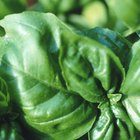
How to Make & Freeze Homemade Spaghetti ...
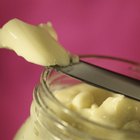
How to Fix Mayo With Broken Emulsion

Can You Refreeze Cooked Spaghetti Sauce ...

Why Does a Sauce Curdle?

How to Keep Custard Sauce From Curdling

How to Make Prosecco Sauce
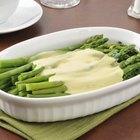
How to Heat Mayonnaise
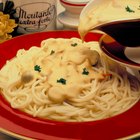
How to Make a Cream Sauce With ...

What Can I Use to Thicken a Cream Sauce?

Can You Refreeze BBQ or Spaghetti Sauce ...

What to Do If My Buttercream Frosting ...

How to Make Crock-Pot Spaghetti

The History of Bearnaise Sauce

Can You Cook Beef Stroganoff Ahead of ...

A Substitute for Meringue

How to Fix Lumpy Buttercream Frosting
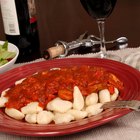
How to Freeze Marinara Sauces

How to Reduce the Vinegar Taste in ...

How to Skim Grease in Sauce
References
- On Food and Cooking: The Science and Lore of the Kitchen; Harold McGee
- Professional Cooking; Wayne Gisslen
- U.S. Food and Drug Administration: Egg Safety -- What You Need to Know
Writer Bio
Fred Decker is a trained chef and prolific freelance writer. In previous careers, he sold insurance and mutual funds, and was a longtime retailer. He was educated at Memorial University of Newfoundland and the Northern Alberta Institute of Technology. His articles have appeared on numerous home and garden sites including GoneOutdoors, TheNest and eHow.